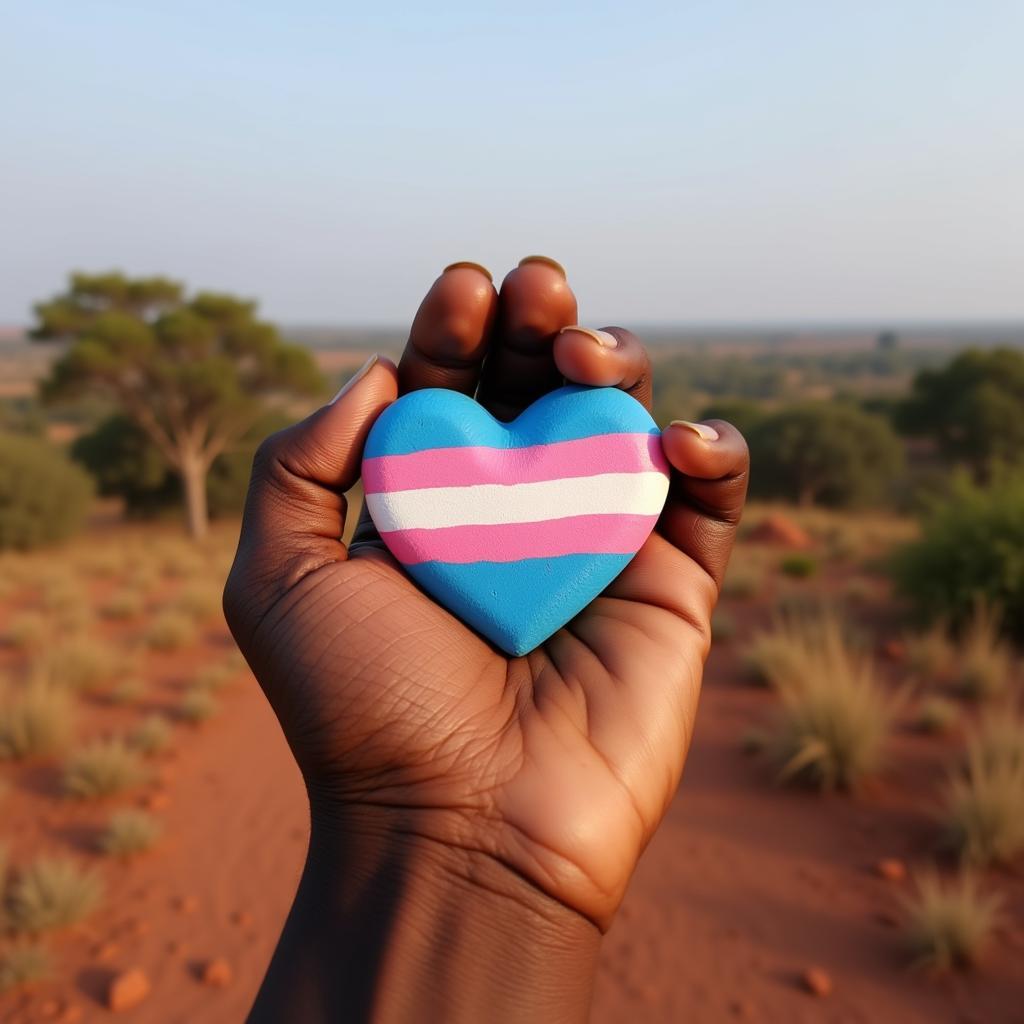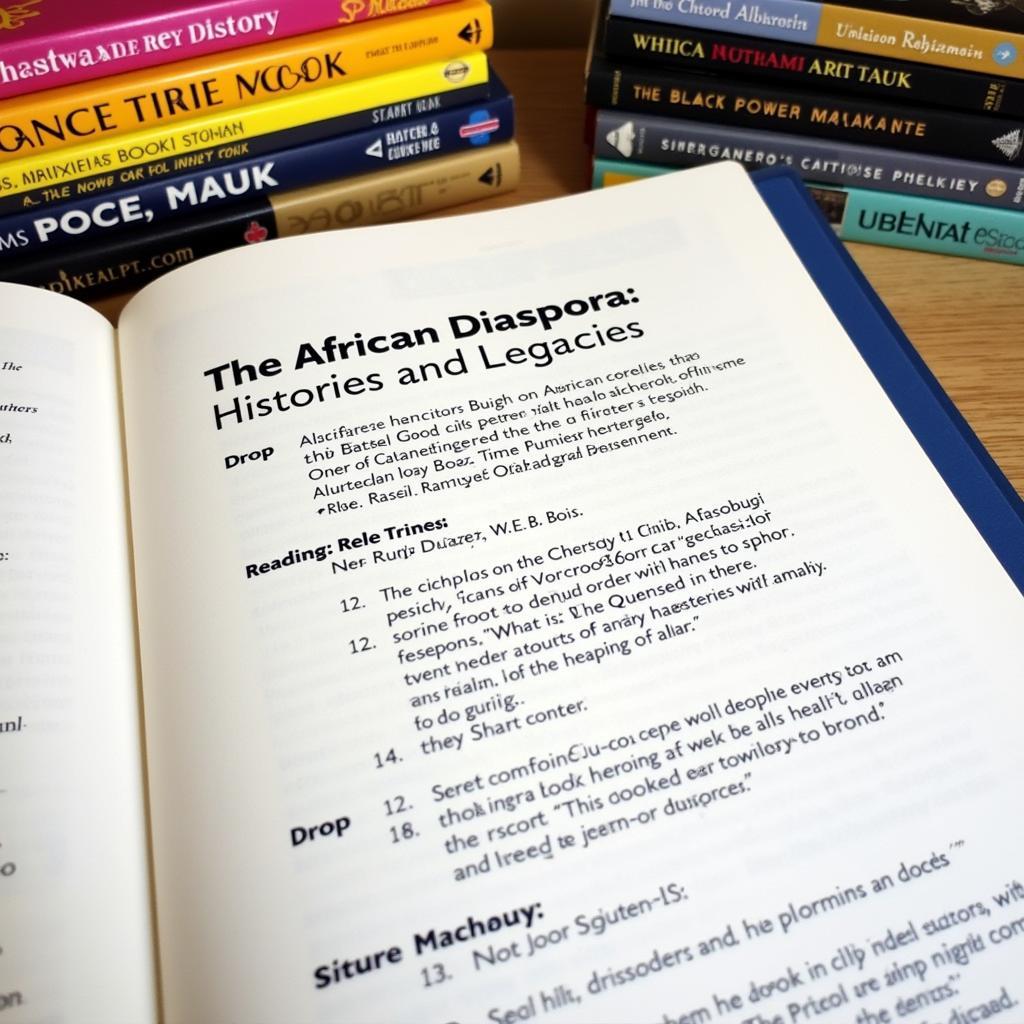Exploring the World of African Carvings
African Carvings are much more than just aesthetically pleasing objects. They are a powerful form of artistic expression, imbued with deep cultural significance and historical narratives. For centuries, skilled artisans across the African continent have transformed wood, stone, ivory, and bronze into intricate masterpieces that reflect the rich heritage and diverse traditions of their people.
The Significance of African Carvings
African carvings are not merely decorative; they serve vital purposes within their communities. They are often used in rituals, ceremonies, and storytelling, acting as tangible representations of beliefs, values, and ancestral spirits. These carvings can be found in a variety of forms, each with its own unique meaning and significance.
Types of African Carvings
Masks: Perhaps the most iconic form of African carving, masks play a central role in many traditional ceremonies. They are often used in dances, rituals, and masquerades, representing deities, ancestors, or spirits. The masks are believed to embody the spirit they depict and are treated with great reverence.
Statues: African statues come in various sizes, from small figurines to towering sculptures. They often depict important figures such as chiefs, warriors, or ancestors, and are used to honor their memory or seek their guidance.
Totem Poles: Common among certain African cultures, totem poles are tall, carved wooden posts that feature a series of animal or human figures. They represent clan lineages, family histories, or spiritual beliefs.
Ceremonial Objects: African carvings also include a wide range of ceremonial objects such as staffs, stools, bowls, and weapons. These objects are often intricately decorated with symbolic motifs and are used in rituals and ceremonies.
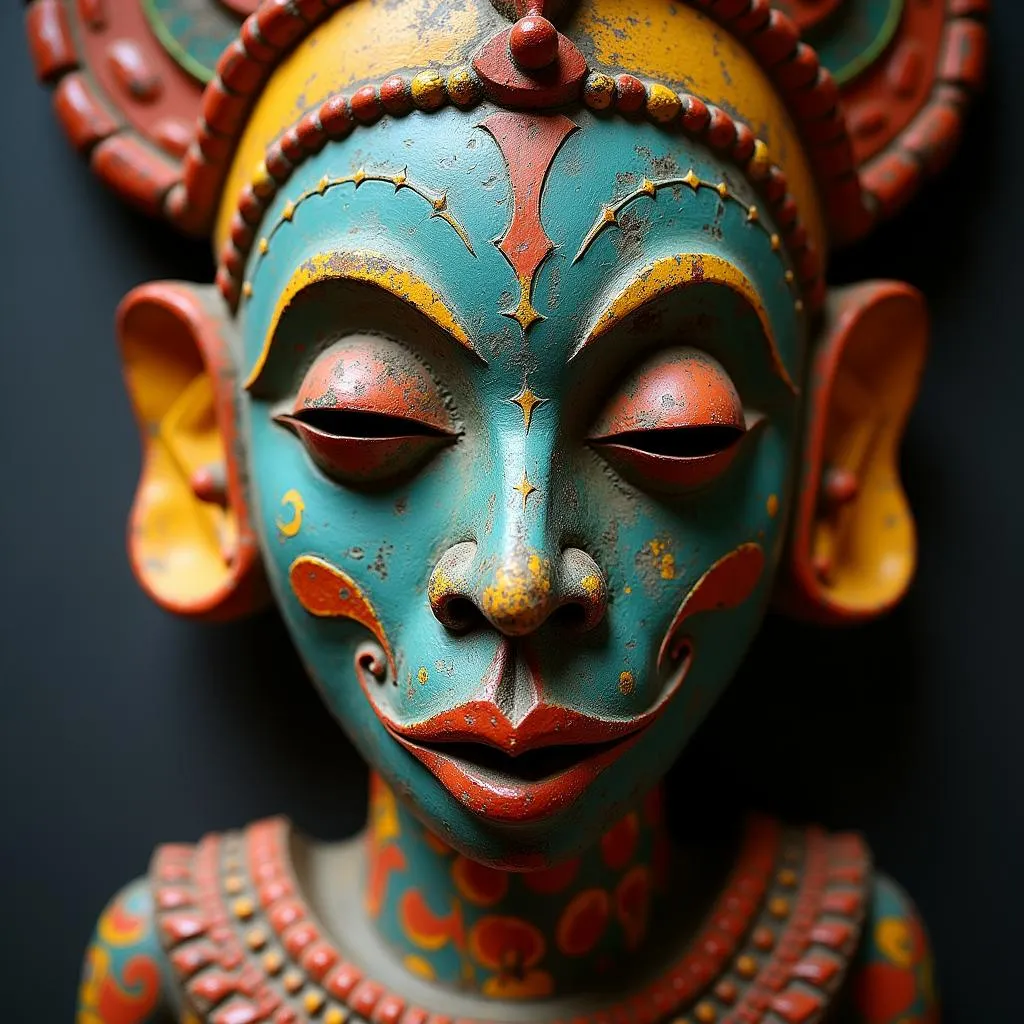 African ceremonial mask
African ceremonial mask
The Rich Symbolism in African Carvings
The symbolism found in African carvings is incredibly rich and complex. Every detail, from the type of wood used to the specific patterns and motifs, carries meaning. Some common symbols include:
- Animals: Animals are often used to represent different qualities or attributes. For instance, the lion may symbolize strength and courage, while the elephant represents wisdom and longevity.
- Human Figures: The depiction of human figures can vary greatly depending on their intended purpose. Ancestors are often depicted with exaggerated features to signify their wisdom and power.
- Geometric Patterns: Intricate geometric patterns are frequently used in African carvings and often represent abstract concepts such as balance, harmony, and interconnectedness.
“African carvings are a testament to the creativity and skill of African artisans. They are a window into the rich cultural heritage of the continent.” – Dr. Adeola Sowemimo, Art Historian
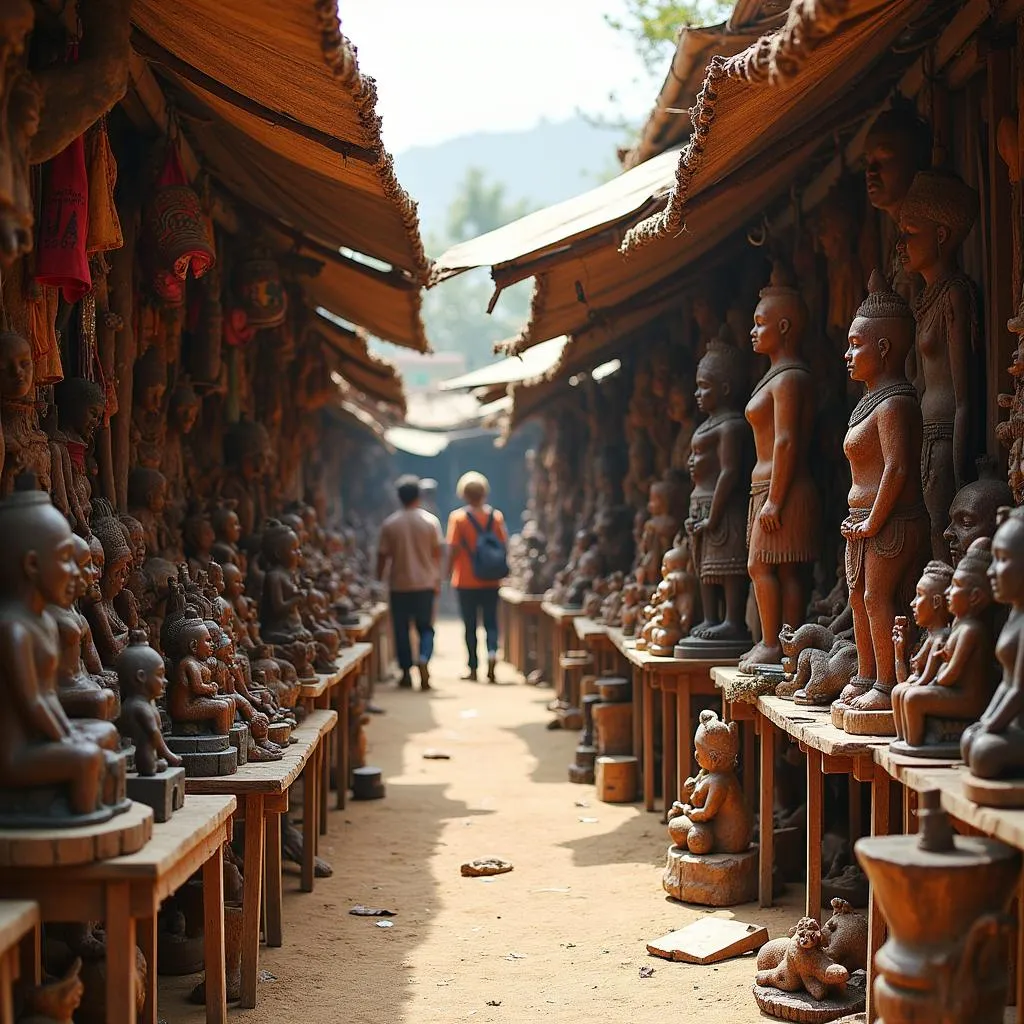 African wooden statues in a market
African wooden statues in a market
The Influence of African Carvings on Modern Art
African carvings have had a profound influence on modern art movements, particularly in the early 20th century. Artists such as Picasso, Matisse, and Modigliani were inspired by the bold forms, abstract representations, and expressive power of African sculptures. This influence can be seen in their use of simplified forms, geometric shapes, and exaggerated features.
Where to Find and Appreciate African Carvings
Today, African carvings can be found in museums, art galleries, and private collections around the world. However, the best way to experience these incredible works of art is to travel to Africa and see them in their cultural context. There are numerous markets and craft centers across the continent where you can purchase authentic African carvings directly from the artists who create them.
Conclusion
African carvings offer a unique glimpse into the diverse cultures and traditions of the African continent. They are more than just objects; they are expressions of beliefs, values, and history. By appreciating the artistry and symbolism behind these carvings, we can gain a deeper understanding of the rich cultural heritage of Africa.
FAQ
-
What materials are used to create African carvings?
- African carvings are typically made from wood, stone, ivory, and bronze. The specific material used often depends on the region and the cultural significance of the carving.
-
Are all African carvings made for religious purposes?
- While many African carvings have spiritual or religious significance, not all of them do. Some carvings are purely decorative or serve practical purposes.
-
How can I tell if an African carving is authentic?
- It can be challenging to distinguish authentic African carvings from replicas. Look for signs of age, wear, and traditional techniques. Purchasing from reputable dealers or visiting museums and art galleries can also help ensure authenticity.
-
What is the significance of the colors used in African carvings?
- Colors play an important role in African carvings and often have symbolic meanings. For example, red may represent power and vitality, while white can symbolize purity and spirituality.
-
How can I learn more about the symbolism in African carvings?
- There are numerous books, articles, and online resources that explore the symbolism and cultural significance of African carvings. Visiting museums and talking to experts can also provide valuable insights.
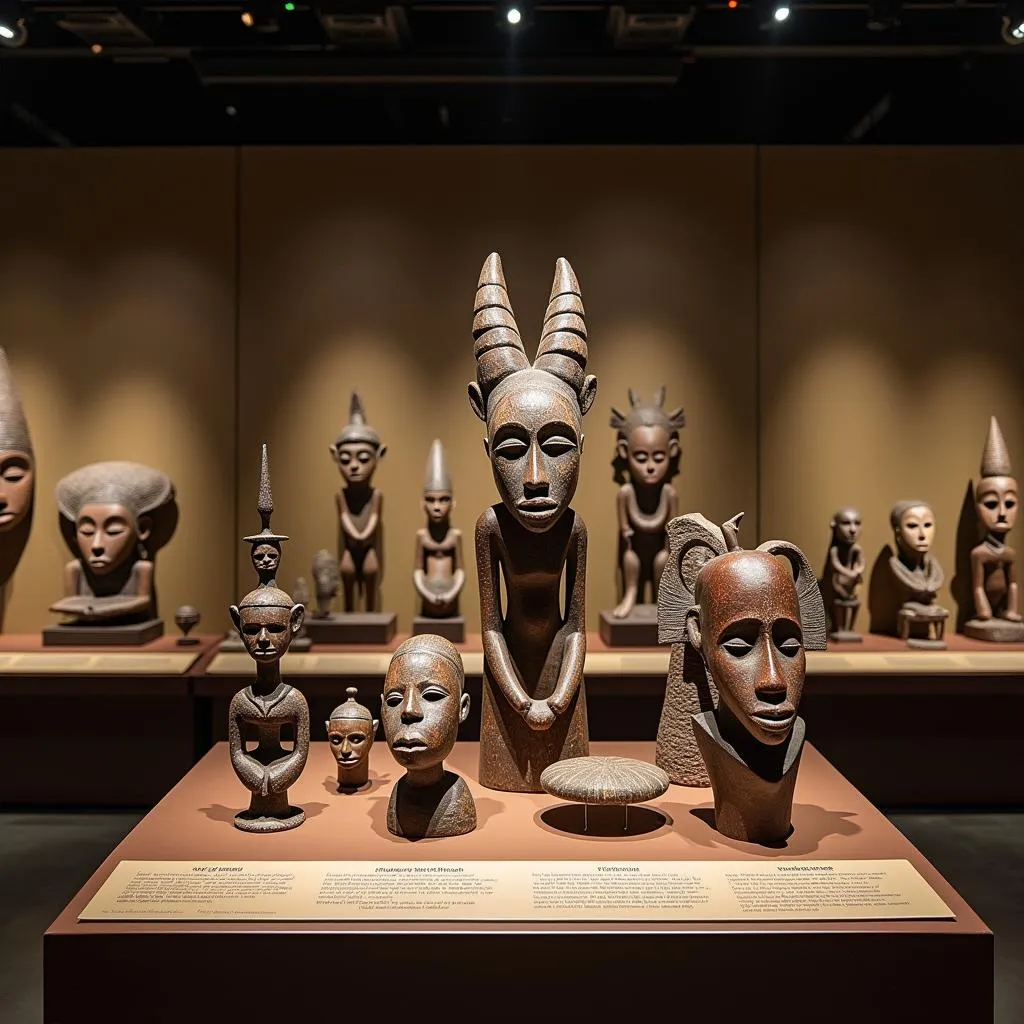 African art museum display
African art museum display
Do you have any other questions about African carvings? We have a wealth of information on our website, including articles on [african kissing indian actress] and [african heidelbergensis]. For further assistance, please contact us at +255768904061, kaka.mag@gmail.com or visit our office in Mbarali DC Mawindi, Kangaga, Tanzania. Our customer service team is available 24/7 to answer your queries.
